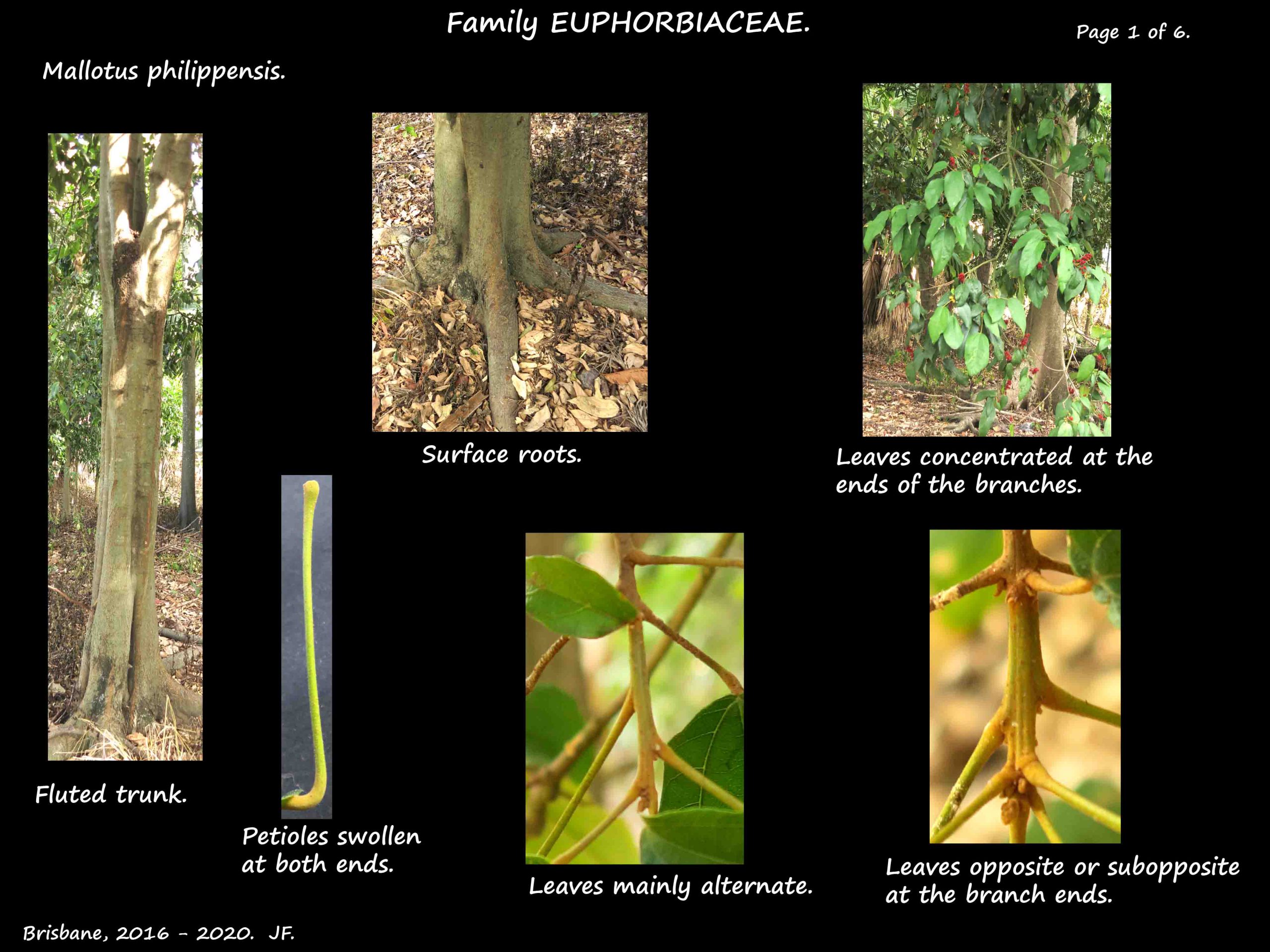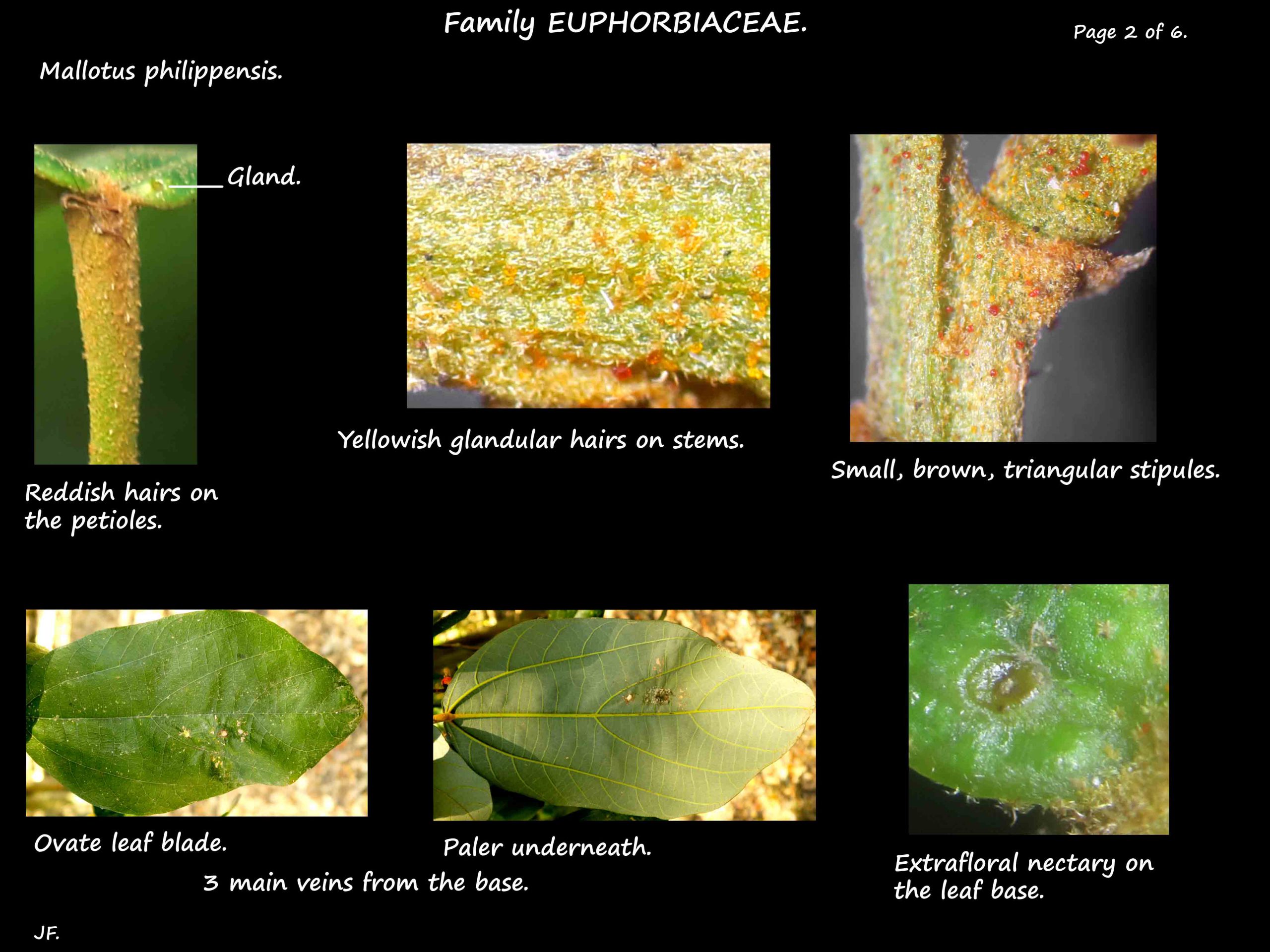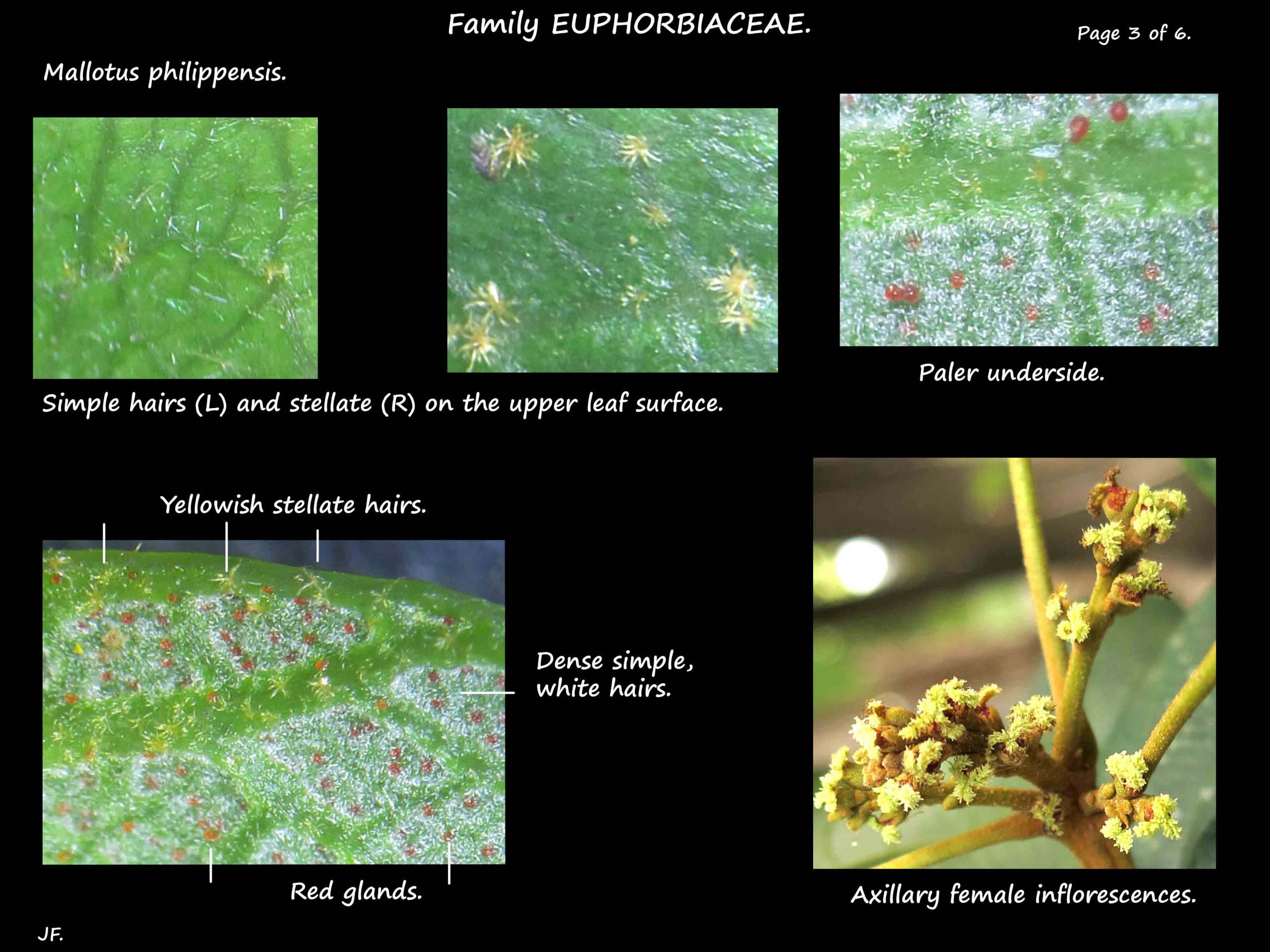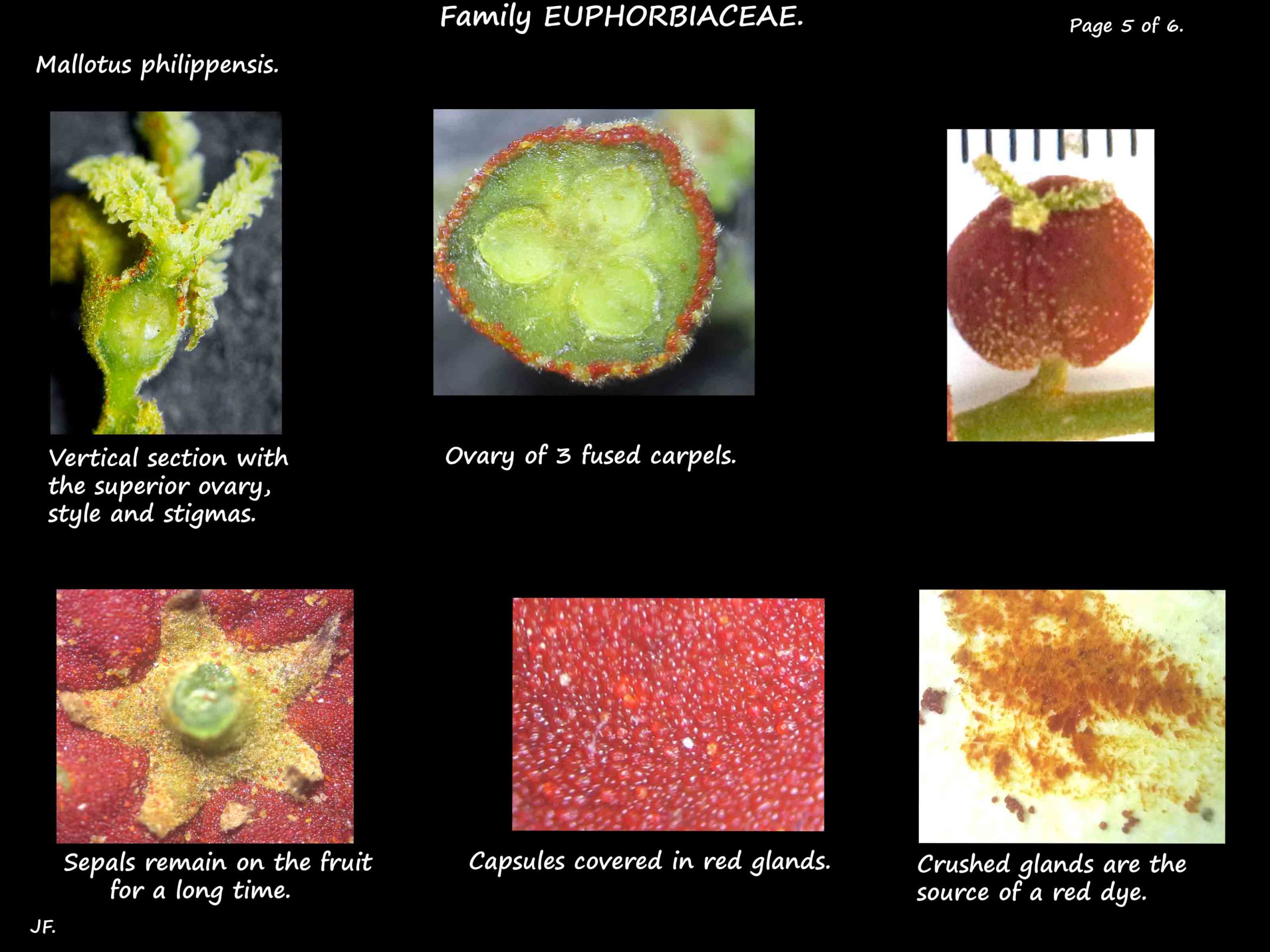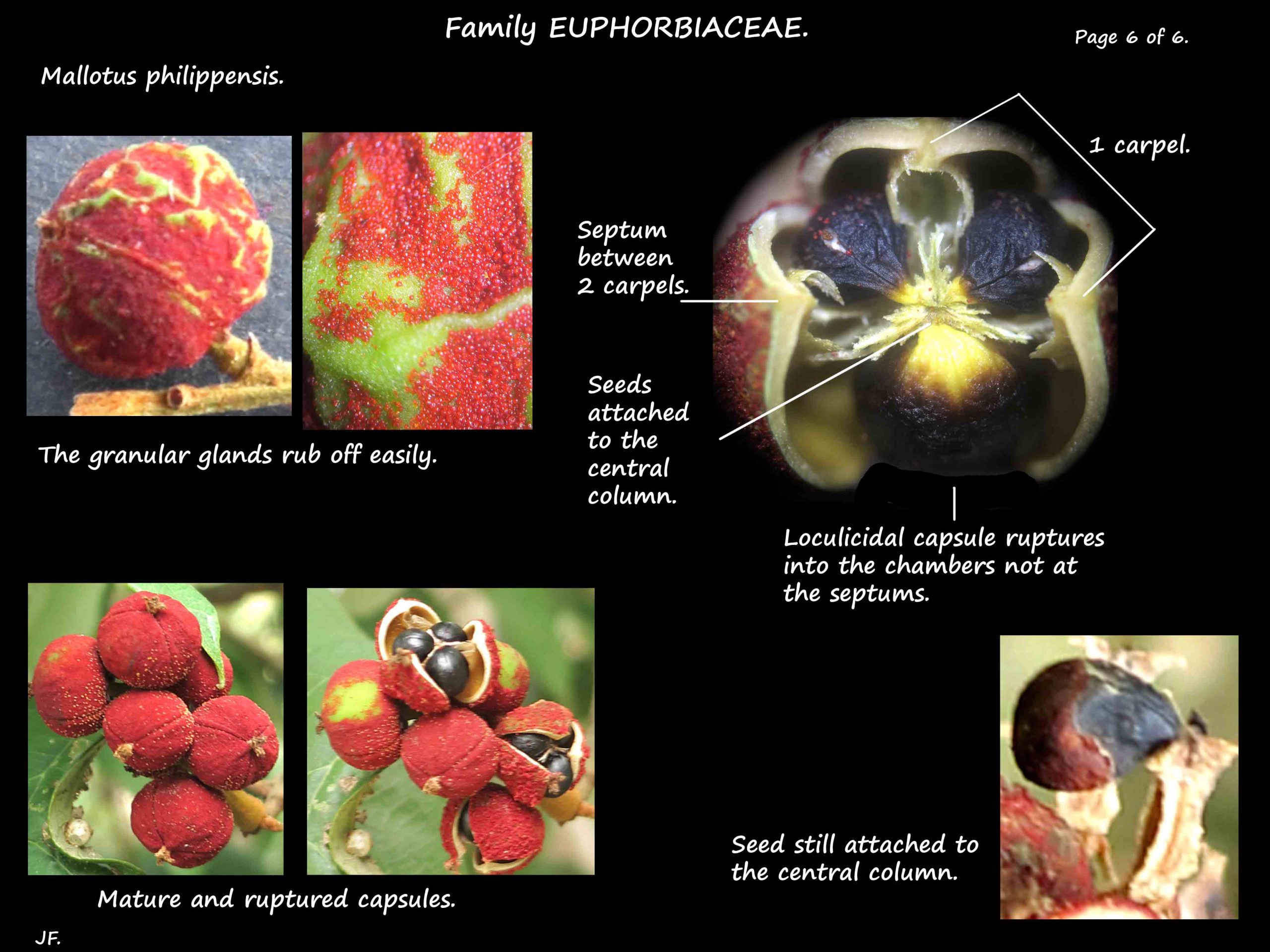Mallotus philippensis.
Family Euphorbiaceae.
There are from 110 to 140 species of Red Kamala with 12 species in Australia.
They have many uses including timber, a red dye and medicinal.
A shrub or small tree often 10 to 12 m high but it can reach 25 m.
The fluted trunk has smooth or slightly cracked, grey and brown bark.
Branches can be smooth but commonly have reddish, simple or stellate hairs.
There can also be yellowish, glandular hairs.
Leaves are mainly alternate but almost opposite at the branch ends.
Petioles, up to 5 cm long, have thickened ends.
There are small, triangular stipules a few mms long that sometimes fall early.
The ovate to elliptic blades are up to 12 cm long and 7 cm wide.
The green upper surface may be smooth or have hairs on the midrib and nerves.
There are often 2 extrafloral nectaries, 1 – 1.5 mm wide, at the base of the upper surface.
The lower surface is greyish-green with simple or stellate hairs and tiny, granular red glands.
The margins are mostly smooth but occasionally have sharp or blunt glandular teeth.
There are 3 veins arising at the base with side veins from the central one.
The inflorescences are terminal or axillary.
There can be 1 or 2 inflorescences in the axils and a terminal cluster.
There are brownish triangular bracts and sometimes bracteoles.
Flowers, either male or female are on separate trees.
They are up to 1 cm across and on hairy stems.
The 3 to 5 persistent sepals, with hairs mainly externally, are often bent backwards.
There are no petals.
Male inflorescences, up to 17 cm long, can hold up to 150 flowers.
Flowers, around 4 mm across, are on stalks up to 3.5 mm long.
There are many stamens with basifixed yellow anthers that have 2 lobes.
The 4 mm long filaments may have a few hairs.
Female inflorescences are branched and up to 20 cm long.
Flowers, up to 7 mm across, are on stalks to 2 mm long.
The 2 mm, superior ovary has (2) 3 fused carpels each with 1 ovule.
The 1 mm style holds (2) 3 stigmas up to 7 mm long.
The feathery looking stigmas have papillae above and are hairy underneath.
The ovary is covered with glandular hairs.
The fruit are roughly spherical, mostly 3-lobed capsules up to around 10 mm across.
They are covered in granular, red glands that are the source of a dye.
The shiny, black seeds are 2 or 3 mm across.
J.F.
